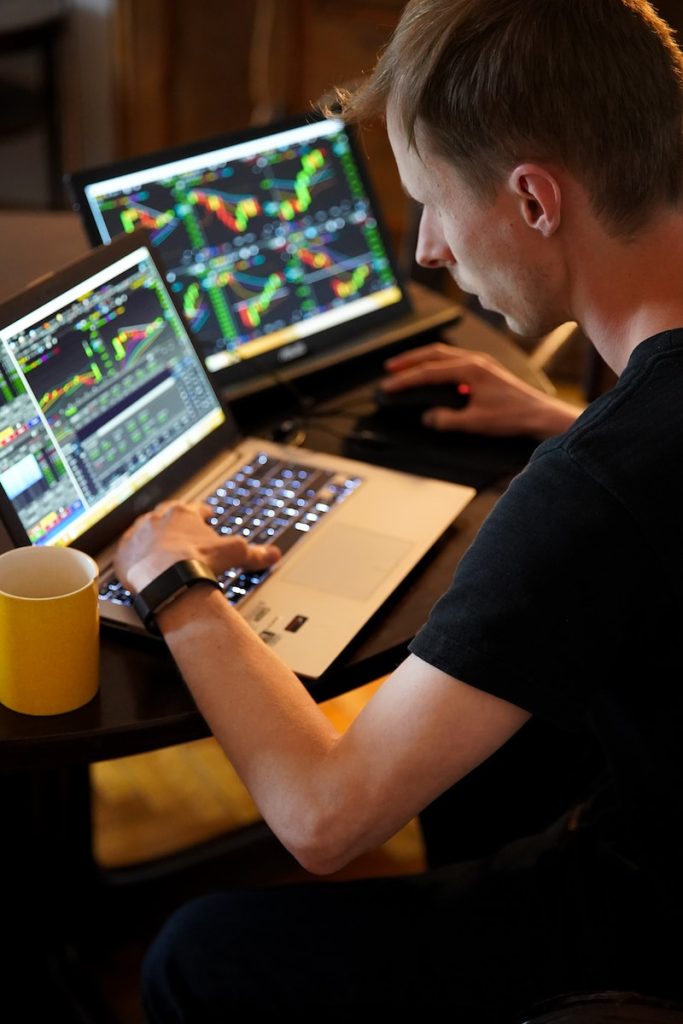You must have seen stock traders working on multiple monitors in movies or online. And, the thought must have crossed your mind – Do they actually need so many screens? The answer is yes! From reading order flows to analyzing sentiment indexes, traders need to keep track of different data to anticipate the highs and lows of the stock market.
In this blog, you will learn about the advantages of using multiple screens for trading. If you are an aspiring stock trader, you can always check out this guide to setup trading screens.
-
Reading Order Flows
Order flows define the pressure to buy or sell in a stock market. That way, one can predict whether the stocks are headed up or down. When combined with technical analysis, order flow also helps find better entry and exit and decide on the type of market order you need, like a limit or stop order.
Order flow reading is a classic stock trading technique to effectively determine the market depth and scope of current buy-limit or sell-limit orders. In other words, it helps a trader determine the liquidity in the market without significantly changing his price.
2. Analyzing Multiple Timeframes
It’s always a wise call to know what’s happening across multiple timeframes as a stock trader. Some traders are also known to work with more than two timeframes in one go.
- Normal Timeframe- Helps in finding the trade setups
- Bigger Timeframe- Helps in recognizing dominant trend directions as well as resistance levels
- Lower Timeframe- Helps in identifying better entry-level
The usual practice sees a trader trading on a 1-hour timeframe for normal ones, with a bigger timeframe for a 4-hour window, while still looking at a 5-15 minute lower timeframe.
- Watching Different Markets
Some markets can co-relate to a great extent, either in the positive or negative direction.
Therefore, working with multiple screens helps a trader keep a tab on different markets in one go. Besides, it also helps them find new trade setups and lucrative opportunities.
- Tracking Sentiment Indexes
Sentiment Indexes determine the percentage of traders who have acquired a certain position for a security. It is an important metric, especially for securities that usually trade on standard exchanges, like stocks, options, and futures. Thus, sentiment indexes are a window to comprehensive data.
Tracking the percentage of traders across different positions helps one understand when to look for a price reversal. Let’s understand this with an example. If 80% of traders are trading too long for a particular stock, there will likely be a few traders left to push the stock price upward. So, one can be optimistic about a price reversal. Thus, sentiment indexes function as indicators for contrarian investing.
It All Boils Down To The Trading Style
While working on multiple screens at the same time is common among traders, the trading style has an important role to play. Here’s how the use of multiple screens can vary depending on the trading style:
- In position or swing trading, a trader usually takes a longer time for market analysis. It can be days, weeks, and even months in some cases. So, the use of multiple screens is optional.
- In quick trading styles like day trading or scalping, there’s a limited window for market analysis. And that’s why traders often need to work with multiple screens to absorb and analyze a lot of information together.
- Similarly, in algorithmic trading, traders are more prone to running advanced backtests, which demand referring to several charts and programs simultaneously. While one can still get the work done with a single monitor, multiple screens offer a seamless view.
Will A New Trader Also Need Multiple Screens?
For a new stock trader, working with multiple screens is not advised as it can unnecessarily lead to information overload and mess up their analysis. Instead, one must focus on executing the trading strategies that they have learned. The idea is to keep it simple at the beginning and gradually learn to work with different trading metrics and indicators. Eventually, the need for multiple screens will arise as one feels the dearth of information. Till then, take it easy
Closing Thoughts
Contrary to what many would like to think, working on multiple screens is a necessity for a trader. It helps them effectively track indicators and make informed decisions. However, there are some trading styles where a trader can be limited to working on a single screen and still assimilate data to take action. Single screen or multiple, in the end, it’s all about working style and productivity, varying from one trader to another.








